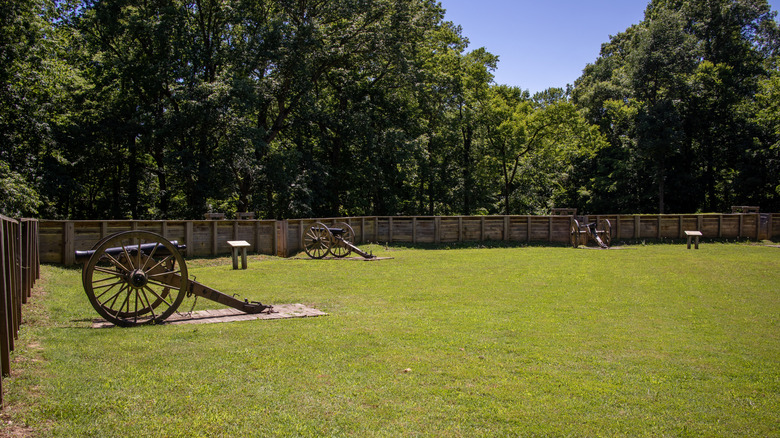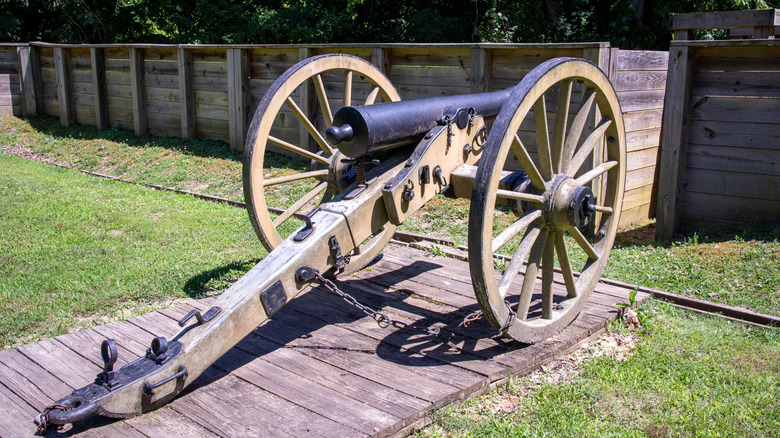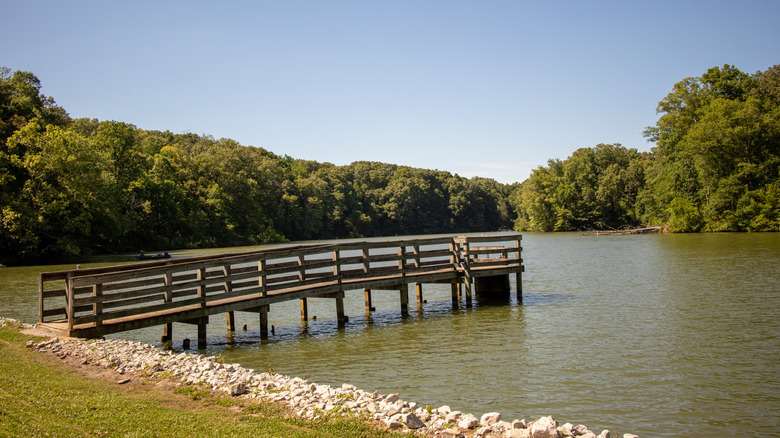This Tennessee Historic Park Is A Unique Day Trip From Memphis With Civil War Significance And Trails
When it comes to parks, many know Tennessee for its portion of the Great Smoky Mountains National Park, including a striking Tennessee road with valley views and overlooks of the Smokies. What you might not know about the state is that it's also home to some of the bloodiest Civil War sites, unsettlingly juxtaposed with peaceful natural landscapes. For example, right on the Mississippi River is Tiptonville, a town with historic charm and pretty parks, which is also near the historic site of the 1862 Battle of Island Number Ten, famous as the battle that forced the Confederacy to surrender. In the quiet hills above the Mississippi River, Fort Pillow State Historic Park is a serene swath of green that was once the site of one of the Civil War's most tragic and controversial battles.
Walking through Fort Pillow State Park today, you'll see a few lingering cannons and the preserved remains of the fort's breastwork across its more than 1,600 acres. People can enjoy activities like paddling Fort Pillow Lake, hiking alongside the old fort, or fishing for bass. Turn back the clock to 1864, though, and this fort was far from tranquil. By that time, it was occupied by Union forces. Nearly half of the soldiers were Black, representing the growing role of Black soldiers in the Union Army, in the troop then called the U.S. Colored Artillery. The Confederates attacked the fort, quickly overtaking the Union soldiers and killing them en masse, even after soldiers laid down their arms. Because of the high death toll — and the killing of soldiers despite attempts to surrender — the event became known in the North as the Fort Pillow Massacre.
Explore the history of one of the Civil War's most brutal attacks at Fort Pillow State Park
The Fort Pillow State Park site was strategically chosen by the Confederates as a location for a fort. Today, it serves as a gorgeous and uniquely elevated point overlooking the Mississippi River. "Most visitors are not aware that Fort Pillow has very steep bluffs made of Mississippi alluvial loess," said Park Manager Robby Tidwell in The Tennessee Magazine. During the time of the Civil War, these bluffs were part of the Confederacy's river defense system. They set up riverside batteries and built breastwork, using the river as a natural barrier against Union advances into the South. Nevertheless, in 1862, after the Union Army attacked Memphis, it returned to Fort Pillow and overtook the stronghold. The Confederates conceded, leaving the fort to the Union.
By 1864, there were around 560 Union troops at Fort Pillow. Upon the Confederate Army's first attack on the fort in an attempt to reclaim it, the Confederate General Nathan Bedford Forrest asked the Union soldiers to surrender. The fort's commander, Major William F. Bradford, refused, though, leading to a swift Confederate assault. Met by around 1,500 Confederate soldiers, the much smaller Union fleet suffered significant casualties: Nearly 300 were killed, of which almost two-thirds were Black soldiers. An investigation of the attack found that many of the soldiers tried to surrender and were killed by the Confederates anyway — due, largely, to racism. A congressional report deemed the attack on Fort Pillow a massacre. Aside from the remains of the breastwork, and the reconstructed fort itself, visitors to Fort Pillow can learn more about its history at a small on-site museum with Civil War displays and artifacts.
From bloody battle site to calm nature sanctuary: How to enjoy Fort Pillow's outdoors
The tragic past of Fort Pillow still lingers in the soil, but these days, it shares a space with chirping birds, scenic river overlooks, and trails filled with happy hikers. There are about 20 miles of hiking trails in the park in total. Two of these trails — the 9-mile Red Trail and 5-mile Yellow Trail — take you to the restored fortification. The 4-mile Chickasaw Bluff Trail is great if you want to get closer to the river and explore the bluffs. The Fort Pillow Lake offers plenty for water-lovers, from boating (with rentals on-site) to fishing its store of bass, breams, and crappies.
The park also has a well-reviewed campground with RV hookups, water stations, and backcountry site options. "The camping area is very nice, large platforms with gravel to place a tent, steel fire pits set in concrete, new picnic tables on a concrete pad," a Tripadvisor reviewer wrote. The grounds have two bathhouses, and you can buy firewood at the park or use dead wood for a campfire.
Travelers from out-of-state can fly into the Memphis International Airport and drive about 1.5 hours from there to reach Fort Pillow State Historic Park. There's no entry fee for the park, and it's open from 7 a.m. to sunset every day. If you plan to stay in Memphis for a couple nights, make sure to check out its Crystal Shrine Grotto, America's largest manmade crystal cave.


